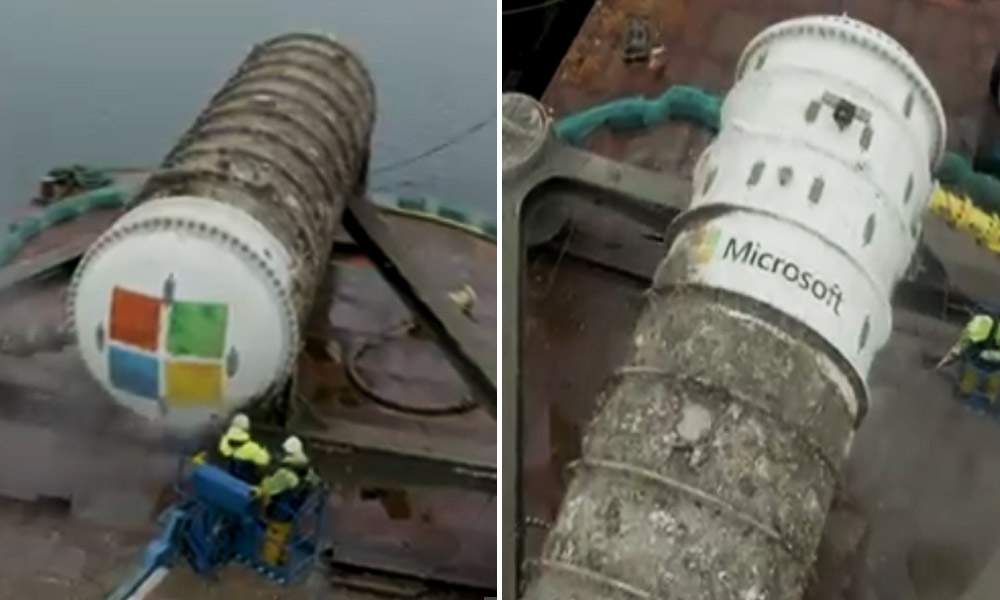
Image Credits: Twitter/ Microsoft
Microsoft Retrieves Underwater Data Centre After Two Years, Studies Deep-Sea Cloud Benefits
Writer: Palak Agrawal
Palak a journalism graduate believes in simplifying the complicated and writing about the extraordinary lives of ordinary people. She calls herself a " hodophile" or in layman words- a person who loves to travel.
India, 17 Sep 2020 7:15 AM GMT
Editor : Shubhendu Deshmukh |
Shubhendu, the quint essential news junky, the man who loves science and politics in equal measure and offers the complete contrast to it by being a fan of urdu poetry as well.
Creatives : Abhishek M
" An engineer by profession, Abhishek is the creative producer of the team, graphic designing is his passion and travelling his get away. In more ways than one, he makes the content visually appealing."
The tech giant revealed the underwater data centre to be eight times more reliable than those on land, crediting the dry nitrogen air inside the container as being less corrosive than oxygen.
In 2018, Microsoft deployed a shipping-container size data centre to the bottom of Scotland's Orkney Islands. The cylindrical data centre was equipped with 861 servers and 27.6 petabytes of storage capacity.
Microsoft has been experimenting with the idea of underwater data centres for over five years now with their Project Natick and the tech giant has revealed that the concept was reliable, feasible and energy-efficient.
The Natick team revealed the underwater data centre to be eight times more reliable than those on land, crediting the dry nitrogen air inside the container as being less corrosive than oxygen.
Additionally, the team also said that taking the cloud storage beneath the sea prevented several external interventions that impact further efficiency.
It added a variety of factors on land can contribute to equipment failure, from oxygen and humidity, temperature fluctuations and bumps and jostles from people who replace broken components.
Reportedly, the team worked on each and every finer detail of the project including selection of the place, the Orkney Islands, because the grid there is supplied 100 per cent by wind and solar. The idea was that the cost of cooling computers would be lower if they were underwater.
The servers are being closely examined so that the research team can learn more. More than half the world's population lives within nearly 200 km of the coast.
"By putting data centre underwater near coastal cities, data would have a short distance to travel, leading to fast and smooth web surfing, video streaming and game playing," Microsoft said in a statement on Monday.
Also Read: Artificial Intelligence Robot 'Aglio Kim' Serves Customers At South Korean Restaurant
 All section
All section














